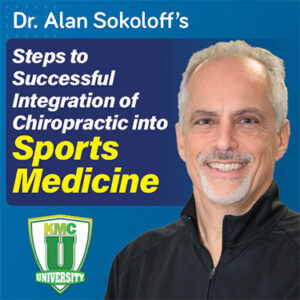Posted by Team KMCU on Dec 2, 2024
You probably have a clinical protocol that you generally follow as you address each patient’s presenting complaint. It likely starts with this simple formula including patient intake, consultation, examination, doctor thinking, and identifying the patient’s condition. In other words, the patient’s history, plus your exam findings equal your assessment and diagnosis, which naturally yields your treatment plan. Consider the history and examination findings to be your “inputs” to clinical decision making. The assessment, diagnosis, and treatment plan are the “outputs” you produce to establish medical necessity.
How Your Style of Practicing Affects Your Standard of Care
The way you approach each patient’s case is based on your style of practicing. You have acquired this based upon your training, how long you have been in practice, your clinical experience with other patients, and your overall patient care philosophy. There are many ways to achieve the desired patient outcomes, but every chiropractor takes a slightly different path. Over time, all providers develop their own “standards of care.” However, although there may be many ways to successfully approach any given condition, it is imperative to remember that the standard of care must be maintained. The chiropractic standard of care may vary from state to state, but the overarching concept is what a licensed, prudent, competent Doctor of Chiropractic in the same region would do in the same or similar circumstances.
The Value of Written Protocols
One valuable option is to create written protocols that help you decide what to do, essentially putting in writing the best practices you have developed over time. Write out your standard approach to the length of treatment, number of visits, and adjunctive procedures you generally utilize for the various conditions and their severity. From your baseline treatment protocols, you can work backwards to customize each patient ‘s treatment plan to their unique condition. Always consider the multitude of factors from each patient’s “inputs” that may affect their outcome and adjust their treatment recommendation accordingly. Utilizing this process makes it easier to create effective written treatment plans.
When your visit-by-visit documentation in the episode of care follows this treatment plan, you can rest assured that reimbursement will be much easier to attain and will go a long way in preventing any future obstacles or recoupments by third-party payers. This is the essence of establishing medical necessity.
Along with clear and concise documentation and as part of your initial office visit treatment plan, Outcome Assessment Tools (OATs) can be used to record the patient’s progress, document the medical necessity of care, and show evidence of delivering functional improvement. OATs are strongly recommended at the beginning of each episode of care, and throughout, during progress reevaluation visits and at discharge to maintenance care. These measures of treatment effectiveness are often required by many third-party payers.
Efficiency Equals Effectiveness
The more efficient you are at managing new and returning patients with new conditions, the more effective you will become. Establishing an appropriate baseline for each episode of care, according to your standard of care, provides the foundation needed for solid documentation and proper reimbursement.
Dr. Colleen Auchenbach graduated with a Doctor of Chiropractic from Cleveland University Kansas City in December of 1998 and enjoyed practicing for over 20 years. Her interest in Medical Compliance began when she earned the 100-hour Insurance Consultant/Peer Review certification from Logan University in 2015. She has been a certified Medical Compliance Specialist-Physician since 2016 and a Certified Professional Medical Auditor since 2022. Dr. Auchenbach joined the excellent team at KMC University as a Specialist in 2020, and as a part of this dedicated team is determined to bring you accurate, current, and reliable information. You may reach her by email at info@kmcuniversity.com or by calling (855) 832-6562.







Comments on Your Standard of Care